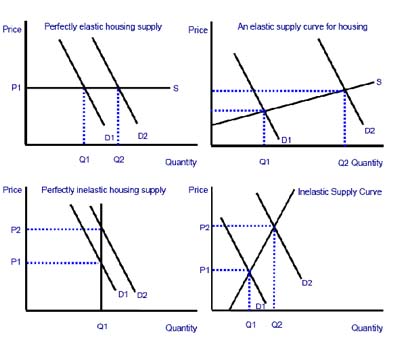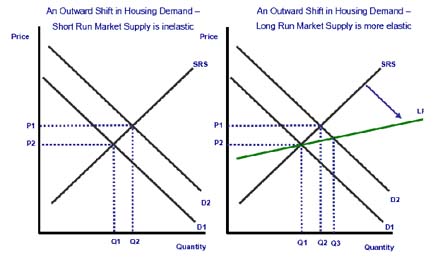|
|


Price Elasticity of Supply of New Housing The supply of new housing is price inelastic in the short run. Several reasons have been put forward for the low price elasticity of supply of housing: - 1. Construction companies cannot suddenly plan and then build thousands of new homes in areas when there is an increase in demand. This is because of planning regulations and other constraints on new housing developments – where local authorities may restrict the building of new property in accordance with their local housing plans. These restrictions includes legislation to protect the green belt. 2. Large increases in house prices do not seem to lead to significant increases in the amount of land made available for housing developments. 3. Supply is also restricted by the limited availability of skilled labour such as bricklayers and electricians and other factor inputs needed in the construction process. 4.Time delays in construction projects mean that the supply of newly built properties is limited. The Supply of Older Housing The supply of older properties affects the balance of demand and supply in the housing market. The available supply depends on the number of people putting their homes on the market when they move from an area or from people choosing to upgrade to a more expensive house with a particular area. Often the level of housing supply impacts on property valuations in a highly localised way. Particular areas can become hugely popular but if supply is limited, the “pent-up demand” for properties carrying desirable postcodes can send housing values soaring. When demand for housing increases perhaps because of an inflow of population into the area, or a rise in incomes following a fall in unemployment, there is upward pressure on market prices. As supply becomes more elastic (shown in the right hand diagram in the figure above) assuming the conditions of demand remain unchanged, we expect to see downward pressure on prices and a further increase in the equilibrium quantity of houses bought and sold. |